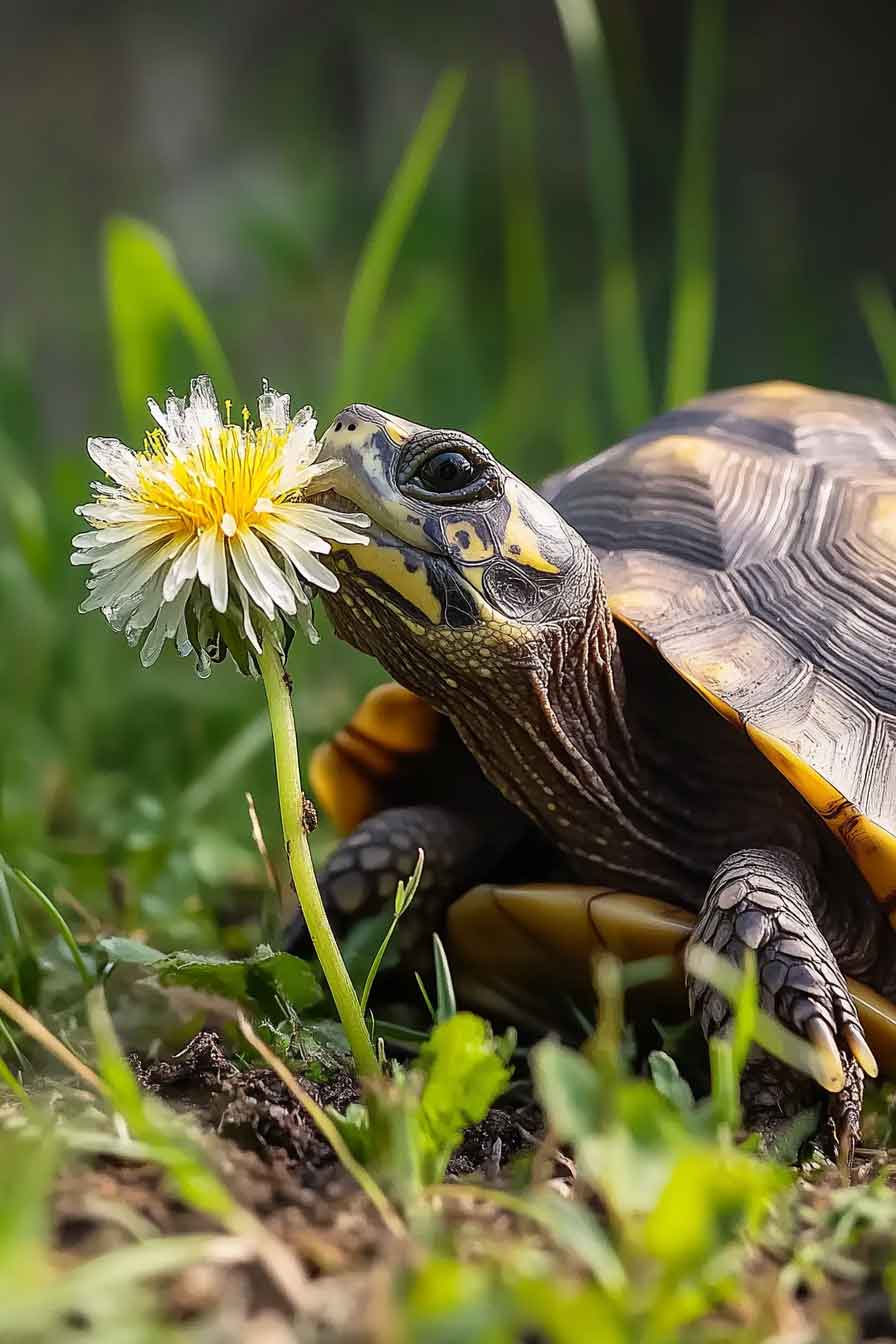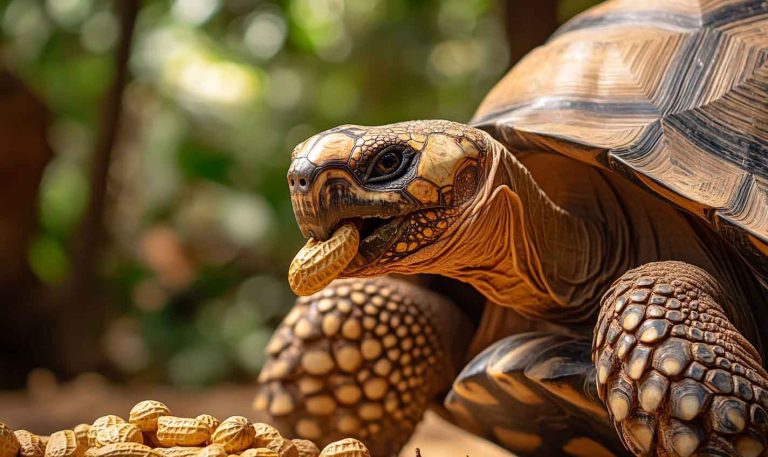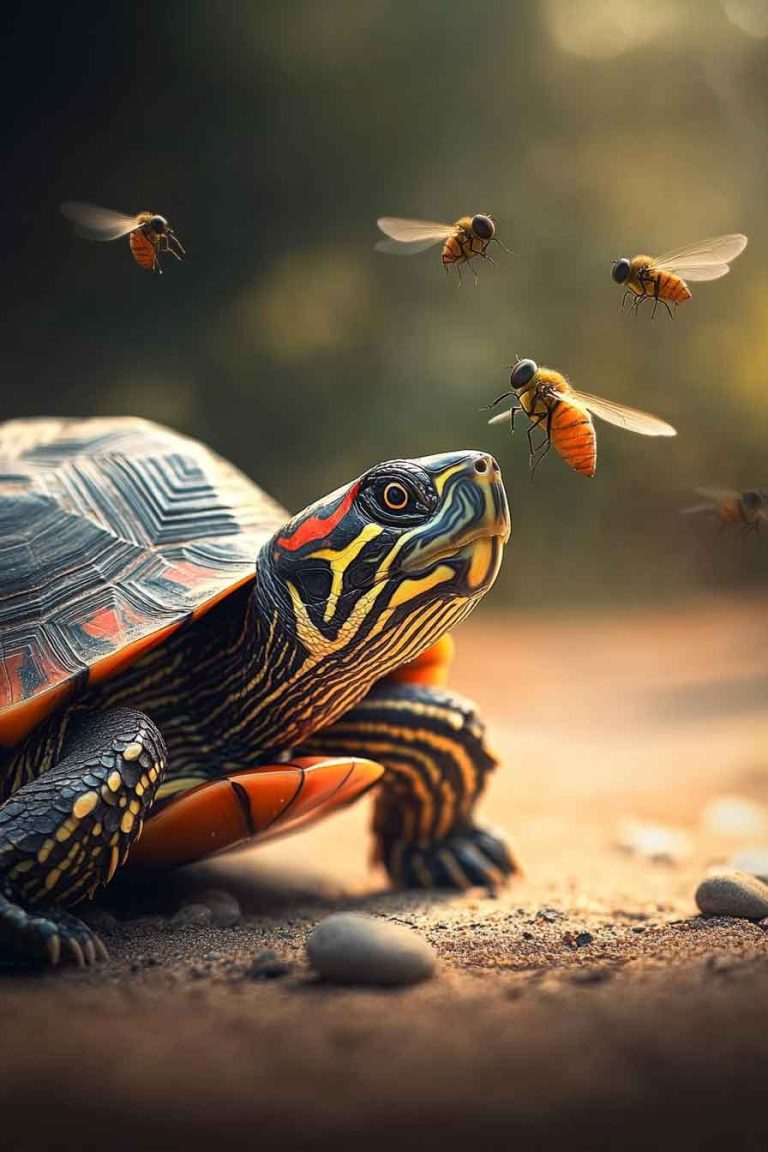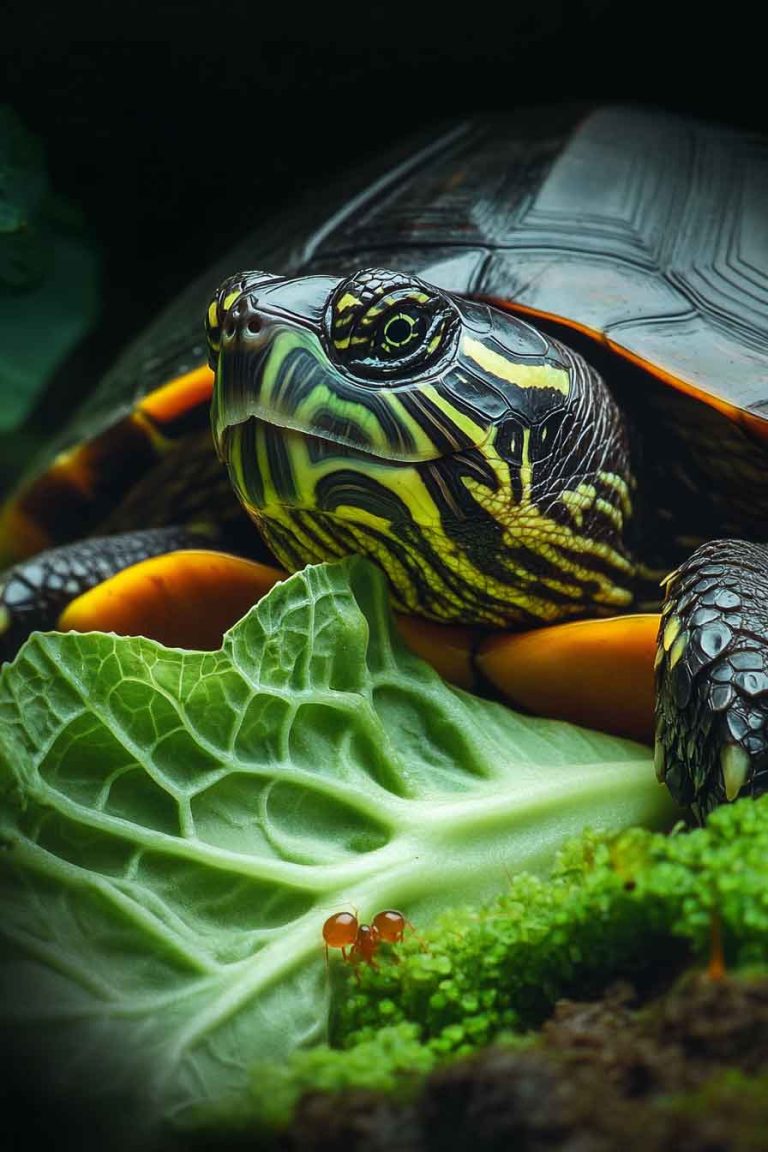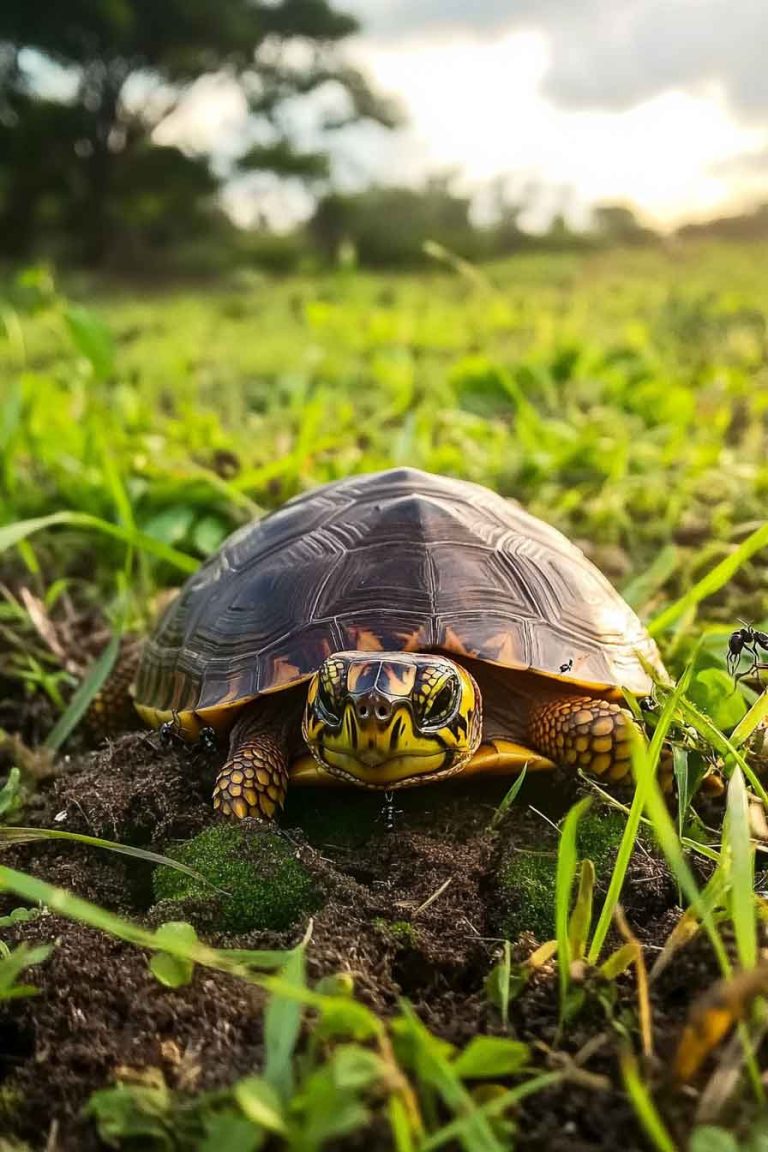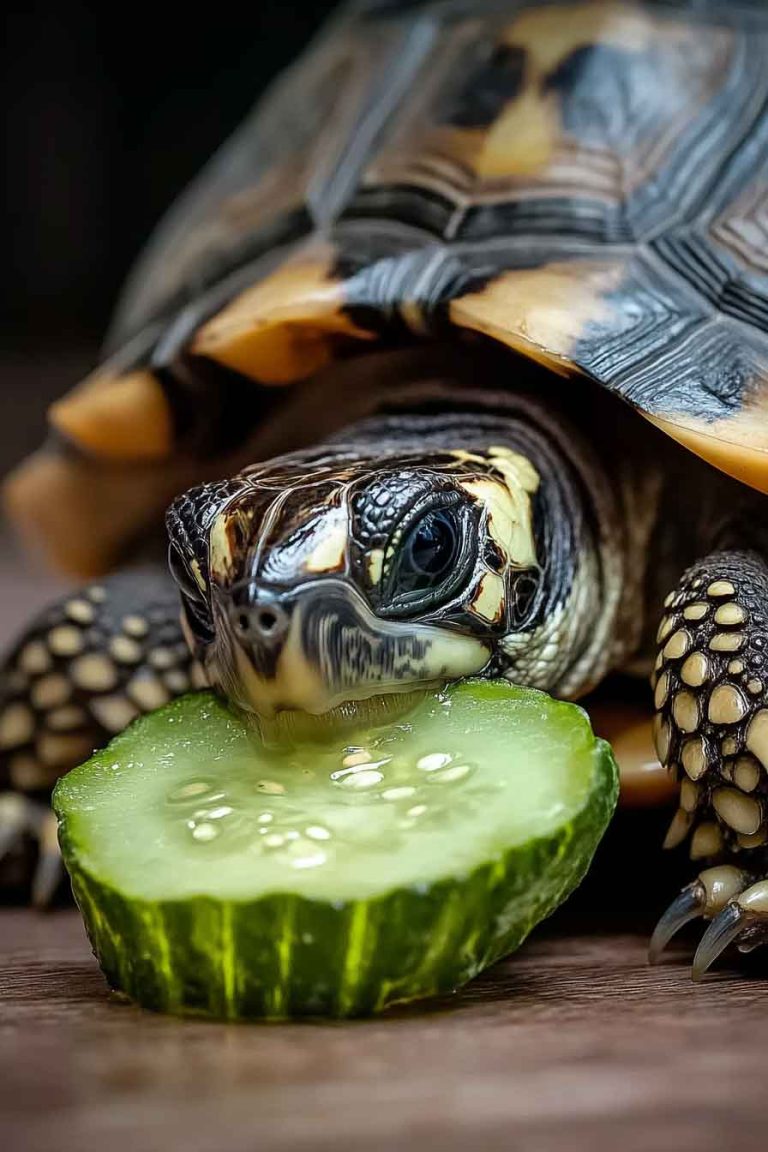Can Turtles Eat Dandelions? What You Need to Know
If you’re a turtle owner like me, you’ve probably wondered about sharing various foods with your shelled companion. I know I have! One question that comes up frequently in turtle care communities is whether our reptilian friends can safely munch on dandelions. After all, these yellow flowers are everywhere in our yards, and they seem…
If you’re a turtle owner like me, you’ve probably wondered about sharing various foods with your shelled companion. I know I have! One question that comes up frequently in turtle care communities is whether our reptilian friends can safely munch on dandelions. After all, these yellow flowers are everywhere in our yards, and they seem so natural and harmless.
So, can turtles eat dandelions? The answer is absolutely yes – turtles can safely eat dandelions! In fact, dandelions are not only safe but incredibly beneficial for turtles. Both the leaves and flowers are packed with essential nutrients that support turtle health. Unlike many plants that can be toxic to our pets, dandelions are a superfood for turtles.
In this article, I’m going to share everything I’ve learned about feeding dandelions to turtles. I’ll cover the nutritional benefits, how much to feed, and answer all the common questions turtle owners have about this common yard “weed.” Keep reading if you want to learn how to safely incorporate this nutritious plant into your turtle’s diet.
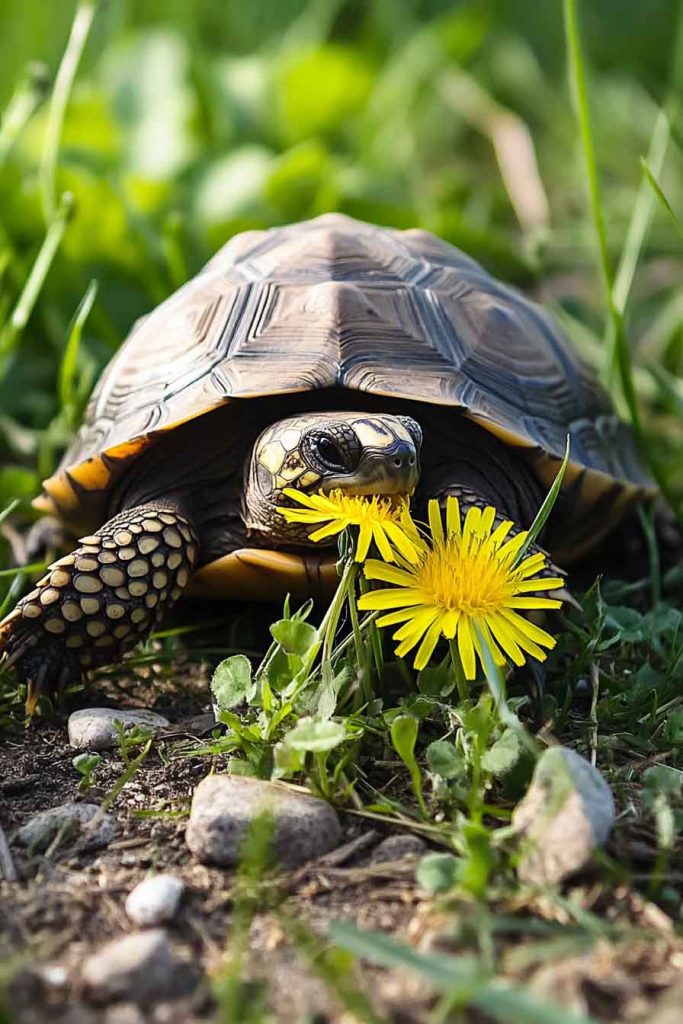
Can You Feed Dandelions To Your Pet Turtle?
The short answer is – absolutely yes! As a turtle enthusiast who’s been caring for these amazing creatures for years, I can tell you that dandelions are one of the best natural foods you can offer your turtle. Unlike some vegetables that require careful consideration, dandelions are completely safe and highly nutritious.
Many turtle owners don’t realize that what we consider a pesky weed is actually a nutritional powerhouse for our reptilian friends. Turtles in the wild naturally forage for dandelions and other similar plants, so feeding them to your pet turtle mimics their natural diet beautifully.
Let me break down the nutritional content found in 100 grams of fresh dandelion greens:
- Carbohydrates: 9.2 g
- Protein: 2.7 g
- Calcium: 187 mg
- Phosphorus: 66 mg
- Vitamin A: 10,161 IU
- Vitamin C: 35 mg
- Vitamin K: 778 mcg
- Iron: 3.1 mg
- Potassium: 397 mg
- Magnesium: 36 mg
- Folate: 27 mcg
This nutritional profile shows exactly why dandelions are so perfect for turtles! The calcium to phosphorus ratio is excellent – approximately 3:1, which is even better than the ideal 2:1 ratio turtles need. This proper mineral balance supports healthy shell development and bone strength.
The high vitamin A content is crucial for turtle eye health, immune system function, and proper organ development. Vitamin K supports blood clotting and bone health, while the iron content helps prevent anemia.
Do Turtles Like Dandelions?
From my experience observing turtles, most absolutely love dandelions! I’ve watched my turtles eagerly search out dandelion leaves and flowers when I place them in their habitat. The slightly bitter taste that many humans find off-putting seems to be quite appealing to turtles.
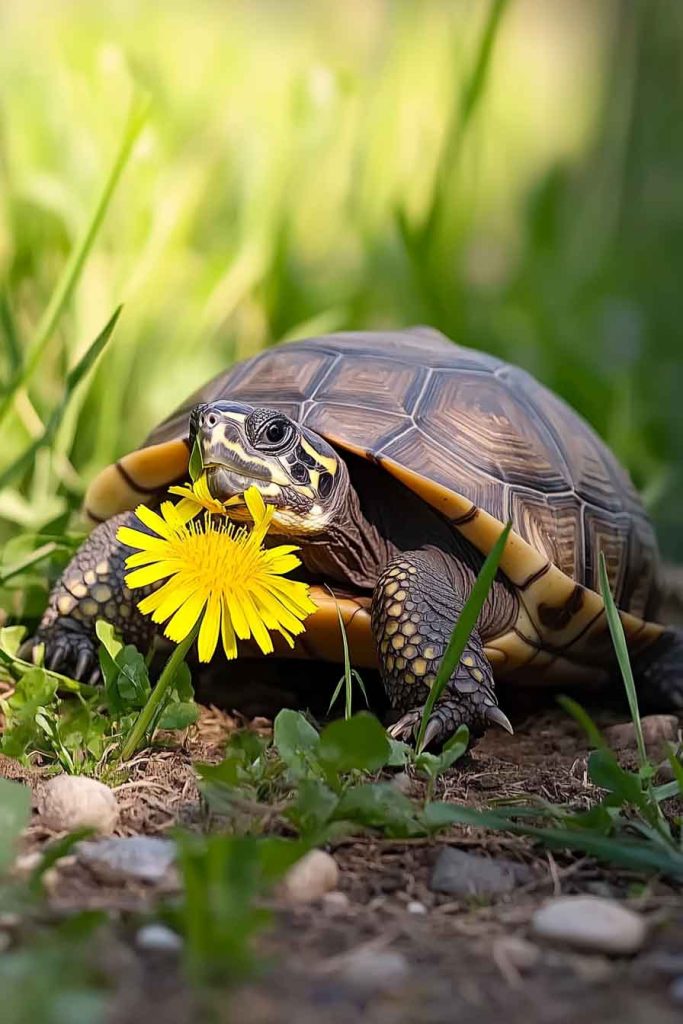
Both wild and pet turtles show a natural preference for dandelions. If you’ve ever seen a turtle in your garden, there’s a good chance you’ve caught them munching on dandelion leaves or flowers. This natural attraction tells us that dandelions are not just safe, but are actually a preferred food source.
Health Benefits of Turtles Eating Dandelions
As someone who’s researched turtle nutrition extensively, I can tell you that dandelions offer numerous health benefits for our shelled friends. Let me walk you through the major advantages:
Excellent Calcium Source
One of the biggest challenges in turtle care is providing adequate calcium for proper shell and bone development. Dandelions are incredibly rich in calcium – containing about three times more calcium than phosphorus. This ideal ratio helps prevent metabolic bone disease, which is unfortunately common in pet turtles fed improper diets.
I’ve seen remarkable improvements in shell quality when turtle owners incorporate calcium-rich foods like dandelions into their pets’ diets. The shells become stronger, more vibrant in color, and develop proper growth patterns.
Supports Digestive Health
The fiber content in dandelions promotes healthy digestion in turtles. Unlike processed foods that can cause digestive upset, dandelions provide gentle, natural fiber that helps maintain proper gut function. I’ve noticed that turtles fed regular dandelion meals tend to have more regular, healthier bowel movements.
Boosts Immune System
The high vitamin A and C content in dandelions significantly supports turtle immune function. Vitamin A is particularly crucial for maintaining healthy mucous membranes, which serve as the first line of defense against infections. Turtles with adequate vitamin A intake are less likely to develop respiratory infections and eye problems.
Natural Detoxification
Dandelions have natural diuretic properties that can help support kidney and liver function in turtles. This gentle detoxification process helps maintain overall health and can be particularly beneficial for older turtles or those recovering from illness.
Hydration Support
Fresh dandelion leaves contain significant moisture content, which helps keep turtles properly hydrated. This is especially important for species that don’t drink water frequently or for turtles recovering from dehydration.
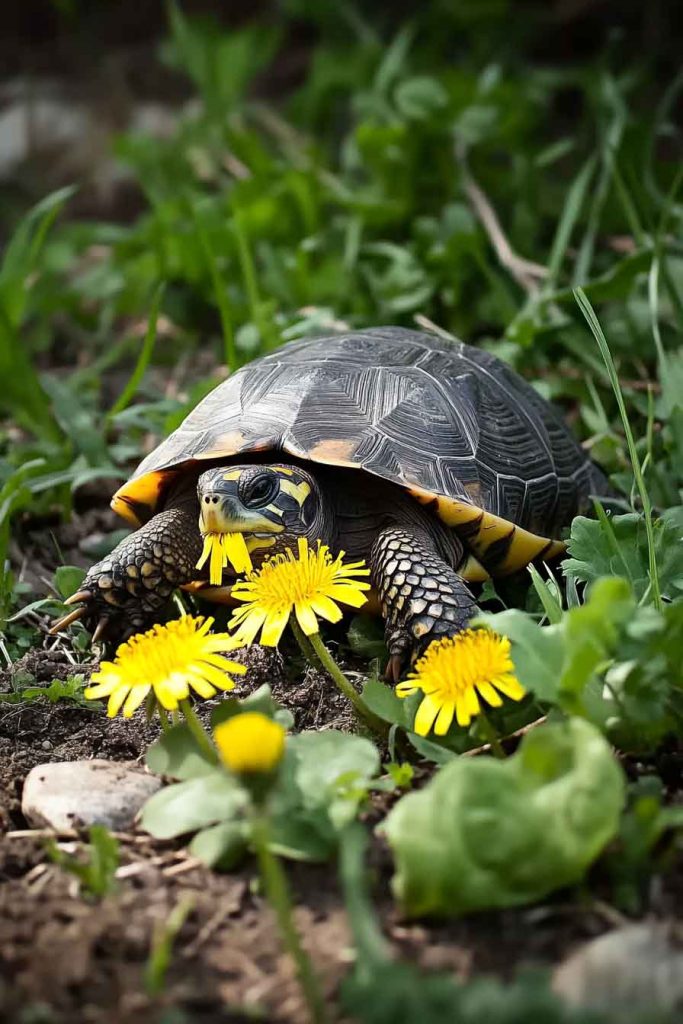
How Much Dandelions Should Turtles Eat?
Based on my experience and consultation with reptile veterinarians, dandelions can make up a significant portion of your turtle’s plant-based diet. For omnivorous turtles, I recommend that dandelions comprise about 10-15% of their total diet, or roughly 20-25% of their vegetable intake.
Here’s how I typically portion dandelions for different turtle sizes:
- Small turtles (under 4 inches): 2-3 small dandelion leaves or 1 flower every other day
- Medium turtles (4-8 inches): 4-6 leaves or 2-3 flowers, 2-3 times per week
- Large turtles (over 8 inches): A small handful of leaves or 3-4 flowers, 3-4 times per week
Remember, variety is key in turtle nutrition. While dandelions are excellent, they should be part of a diverse diet that includes other safe vegetables, appropriate proteins, and commercial turtle pellets.
Can You Feed Dandelions to Baby Turtles?
Absolutely! In fact, I encourage feeding dandelions to baby turtles, though with some important considerations. Baby turtles have even higher calcium needs than adults due to their rapid shell growth, making dandelions an excellent choice.
For baby turtles, I recommend:
- Chopping dandelion leaves into smaller pieces for easier consumption
- Offering dandelions 2-3 times per week
- Starting with small amounts and gradually increasing as they grow
- Ensuring the dandelions are pesticide-free and thoroughly washed
Baby turtles often show immediate interest in dandelion flowers, which can help encourage healthy eating habits from an early age.
Can Box Turtles Eat Dandelion Flowers?
Yes, box turtles can absolutely eat dandelion flowers! In my experience, box turtles are particularly fond of the bright yellow blooms. Can box turtles eat dandelion flowers safely? Definitely – the flowers are just as nutritious and safe as the leaves.
Box turtles in the wild naturally forage for dandelion flowers, especially in spring and early summer when they’re most abundant. The flowers provide excellent nutrition and add visual appeal to their diet. I’ve observed that offering dandelion flowers can encourage picky box turtles to eat more vegetables overall.
When feeding dandelion flowers to box turtles, remove them from the stem and offer just the flower head. This makes them easier to eat and digest.
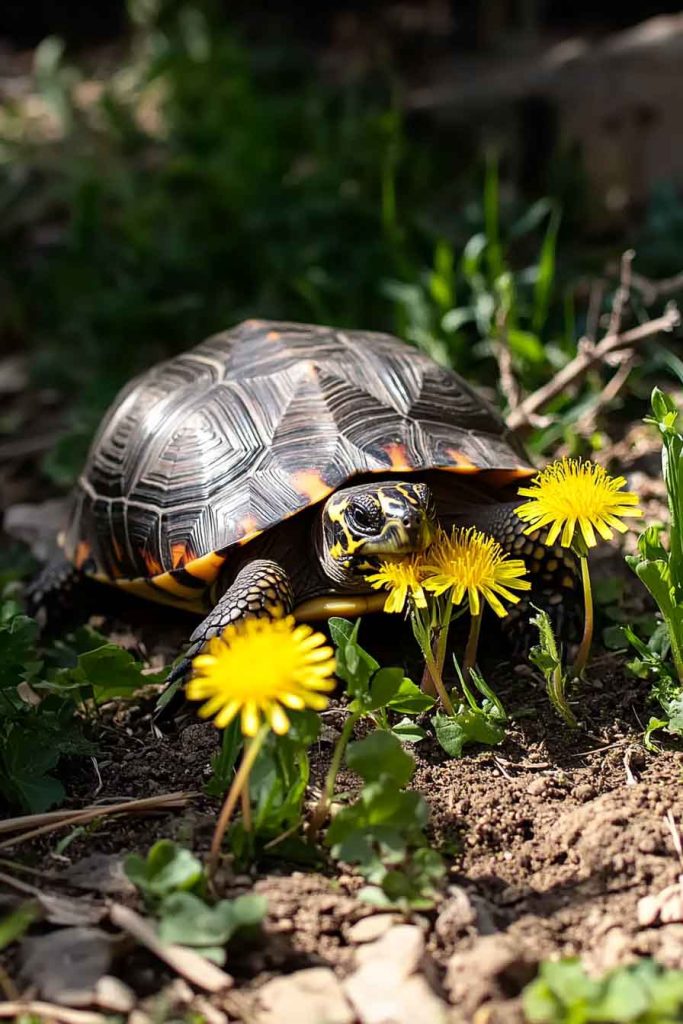
Preparing Dandelions for Your Turtle
Proper preparation is crucial for safely feeding dandelions to your turtle. Here’s my step-by-step process:
Selection and Harvesting
- Choose young, tender leaves for the best nutritional value
- Avoid dandelions from areas treated with pesticides, herbicides, or fertilizers
- Don’t harvest from roadsides where plants may be contaminated with exhaust fumes
- Pick flowers when they’re fully open but still fresh
Cleaning Process
- Rinse all dandelion parts thoroughly under cool running water
- Gently shake off excess water
- Inspect for any signs of disease, insects, or damage
- Remove any wilted or yellowed portions
Serving Suggestions
- Tear larger leaves into bite-sized pieces
- Mix with other safe vegetables for variety
- Offer flowers whole or torn into smaller pieces for baby turtles
- Serve fresh – don’t let prepared dandelions sit out for more than a few hours
Frequently Asked Questions (FAQs)
Can Red Eared Slider Turtles Eat Dandelions?
Yes! Red eared sliders can safely eat both dandelion leaves and flowers. As semi-aquatic omnivores, they benefit greatly from the calcium and vitamins in dandelions. I recommend offering dandelions as part of their regular vegetable rotation, about 2-3 times per week.
Can Painted Turtles Eat Dandelions?
Absolutely! Painted turtles are omnivores with a diet similar to red eared sliders. Dandelions provide excellent nutrition for painted turtles and can help support their shell health and overall vitality. The natural foraging behavior of eating dandelions also provides mental enrichment.
Are Dandelion Roots Safe for Turtles?
While dandelion roots aren’t toxic, I don’t typically recommend them for turtles. The roots are quite tough and fibrous, making them difficult for turtles to digest properly. Stick to the leaves and flowers, which provide better nutrition and are easier to process.
Can I Feed Dried Dandelions to My Turtle?
Fresh dandelions are always preferable, but properly dried dandelions can be offered occasionally. However, dried dandelions lose much of their vitamin C content and moisture. If using dried dandelions, soak them in water for a few minutes to rehydrate before serving.
How Often Should I Feed Dandelions?
I recommend offering dandelions 2-4 times per week as part of a varied diet. This frequency provides consistent nutritional benefits without creating dietary imbalance. Remember, even healthy foods should be part of a diverse menu.
Conclusion
After years of turtle care and extensive research, I can confidently say that dandelions are one of the best natural foods you can offer your turtle. Far from being just a myth, the benefits of feeding dandelions to turtles are well-documented and significant.
These common “weeds” provide exceptional nutrition, support shell health, boost immune function, and offer mental enrichment through natural foraging behaviors. Whether you have box turtles, red eared sliders, painted turtles, or other species, dandelions can be a valuable addition to their diet.
As a responsible turtle owner, I encourage you to incorporate dandelions into your pet’s feeding routine. Just remember to source them safely, prepare them properly, and offer them as part of a balanced, varied diet. Your turtle will thank you for this nutritious treat, and you’ll have the satisfaction of providing truly natural, beneficial nutrition.
The next time you see dandelions growing in your yard, don’t think of them as weeds – think of them as a free, nutritious gift for your shelled companion!

